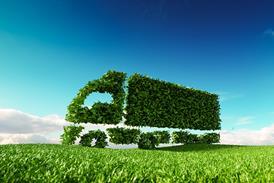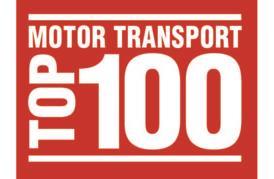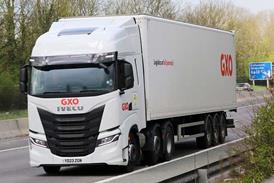Members of the FTA’s Logistics Carbon Reduction Scheme (LCRS) are on track to meet their target of an 8% reduction in the carbon intensity of their operations between 2011 and 2015, an FTA conference, Cutting Carbon, Cutting Costs, heard last week (21 May).
Launched in 2009 with 12 founder members, the LCRS now has 97 members running nearly 70,000 commercial vehicles. They achieved a 3.4% reduction in the CO2 equivalent per vehicle kilometre in 2012 compared with 2011, and since 2005 average emissions have been reduced by 15%. While 40% of LCRS members run over 500 vehicles, a quarter run fewer than 100 trucks, and the FTA is keen to recruit more smaller fleets to the scheme.
Dave Rowlands, technical services director of LCRS member Wincanton, told the conference that several measures were still needed to enable operators to make further reductions in carbon emissions. “Hybrid technology will need to make great strides forward and the costs tumble,” he said. “We need factory-sourced alternative fuel vehicles, rather than them being farmed out to under-resourced aftermarket suppliers. And we need to smash the link between diesel and gas prices so gas becomes more attractive.”
While alternative fuels are seen as essential to making the very deep cuts in CO2 emissions demanded by government, Iveco product director Martin Flach said the technology already existed to improve the thermal efficiency of diesel engines from their current 46% to at least 55% by 2020.
“This will require integrated energy management, with the biggest area being waste heat recovery,” Flach said. “That could yield an 11% improvement, while kinetic energy recovery could produce another 7% in the right operation. Beltless auxiliaries might give a 5% improvement, an active front shutter 1.5%, flat heat exchangers another 1.5% and full LED lighting up to 1%.”
UK leading
Flach added that while Iveco does offer a range of gas vehicles he did not have a 400hp 6x2 tractor – yet. “But I will have in the future,” he said. “The UK has the largest fleet of gas vehicles in Europe. Italy has six and Finland just one.”
One barrier to the wider adoption of gas or gas/diesel dual fuel trucks is the lack of a UK-wide gas fuelling network, but James Westcott, business development director of biomethane supplier Gasrec, said the company now had 11 sites operating in the UK, including its recently opened flagship refuelling station at the Dirft rail freight terminal, and now supplied low carbon fuel to over 400 vehicles.
“This is the first step on a long journey to improve the [gas refuelling] infrastructure,” he said. “We believe it is coming.”
Westcott called for the government to give equal subsidies and incentives for the use of biomethane for road transport as it gives for its use to heat buildings. “Now incentives are heavily weighted towards injecting [biomethane] into the grid,” he said. “But stranded gas fields are often nowhere near the grid.”
GoGreen
Peter Stokes, innovation manager at DHL Supply Chain, said that under the parent company’s GoGreen initiative the operator was looking to cut carbon emissions by 30% between 2007 and 2020, and for Supply Chain 94% of emissions came from its road transport fleet.
DHL Supply Chain has already invested in 1,000 Teardrop trailers, limited the speed of trucks and optimised vehicles. “A lot of the low hanging fruit has already been picked,” he said. “Now we are looking at two routes to cutting emissions – more reductions in fuel consumption and low carbon alternative fuels.”
To reduce fuel use in conventional vehicles, Stokes said “telematics was the best way” to monitor and improve driver behaviour, and the company had put telematics into 4,000 vehicles since 2010. “We have seen an improvement of at least 4% and in some sites over 10% as a direct result,” he said. “Instead of focusing on technology and training the focus is now on leadership. We make it part of the management process so they know it isn’t going away.”
In Supply Chain’s distribution operations, the opportunities for electric and diesel/electric hybrids are limited. “We run 12 electric vehicles and we have had four or five hybrids – but only one is left,” said Stokes. “So we are now looking at a dual fuel solution.”
DHL Supply Chain owns almost 150 dual fuel trucks and runs around the same number for customers. “We are early adopters so we expect challenges,” said Stokes. “The network [of refuelling stations] is steadily expanding and that [extra competition] will have an impact on prices.”
LCRS 2014 Awards winners
Best fuel efficient operation - Sainsbury's
Most innovative fleet management - Turners (Soham)
Best use of alternative low carbon fuels and technologies - DHL Supply Chain
Breakthrough in modal shift - Tesco
Leadership in logistics carbon reduction - DHL Supply Chain - Consumer Life Sciences















